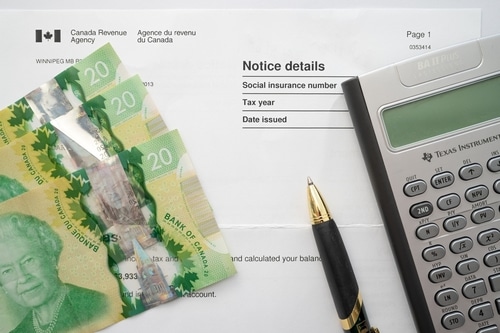Introduction to Canada’s Tax System
Canada has a tax system that includes both federal and provincial taxes. Every person living in Canada must complete a federal tax return with the Canada Revenue Agency (CRA). Most provinces use the CRA to handle their provincial taxes. However, Quebec takes care of its own taxes.
You pay income tax on most types of earnings. This includes money from jobs, self-employment, profits from selling things, pensions, and rental income. Sales taxes change from one province to another, and each area has different tax credits and benefits.
British Columbia
British Columbia residents pay both federal and local taxes. In 2025, BC has tax rates that start at 5.06% and go up to 20.5%. For sales taxes, there is a 5% GST and a 7% PST.
BC has tax credits that you can get back or keep. These include the BC Family Benefit, BC Renter’s Credit, and the basic personal amount. Newcomers and self-employed people should look closely at extra forms and possible deductions.
Quebec
Quebec has a special tax system with its own tax agency called Revenu Québec. People living there need to submit both a federal tax return to the CRA and a provincial return to Revenu Québec. In 2025, provincial tax rates go from 14% to 25.75%. There is also a provincial sales tax (QST) of 9.975% along with the 5% GST.
Special tax credits are the Family Allowance, Solidarity Credit, and Work Premium. Quebec also gives credits for older people and those with disabilities.
Alberta
Alberta does not have a provincial sales tax. It only has a 5% federal GST. The income tax system in Alberta is simple. In 2025, the rates will be between 10% and 15%. Alberta also provides high basic credits for individuals and couples.
Families gain from the Alberta Child and Family Benefit. Workers can get the federal Canada Workers Benefit. Self-employed people in Alberta can deduct business costs. They must follow other CRA rules, too.
Manitoba
Manitoba has a 5% GST and a 7% PST. The tax rates for 2025 will be between 10.8% and 17.4%.
The province gives credits like the Manitoba Family Credit and the Fitness and Arts Tax Credits for kids. Renters may get a refund through the Renters Tax Credit. Fertility treatments can also get a 40% refund. Manitoba also combines several federal-style credits under provincial programs.

Ontario
Ontario uses the Harmonized Sales Tax (HST), which is 13%. The income tax rates in the province range from 5.05% to 13.16%.
Ontario has several special credits. These include the Ontario Child Benefit, the Seniors Care at Home Tax Credit, and the Low-Income Workers Tax Credit. Seniors who are 65 and older may also get public transit discounts. Self-employed people can deduct certain expenses and must file extra CRA forms.
Saskatchewan
Saskatchewan has tax rates that go from 10.5% to 14.5%. There is also a PST of 6% added to the 5% GST.
Residents might be able to get the First-Time Homebuyer Tax Credit and the Low-Income Tax Credit. Saskatchewan has a simple three-bracket system that makes it easier for people with high-income to calculate their taxes. The province also has a PST rebate for building new homes.
Federal and Provincial Tax Rates Overview (2025)
Every province has its own way of setting rates. Here’s a quick look:
| Province | Lowest Marginal Rate | Highest Marginal Rate | GST/HST | PST/QST |
|---|---|---|---|---|
| British Columbia | 5.06% | 20.50% | 5% | 7% |
| Alberta | 10.00% | 15.00% | 5% | N/A |
| Manitoba | 10.80% | 17.40% | 5% | 7% |
| Ontario | 5.05% | 13.16% | 13% | N/A |
| Quebec | 14.00% | 25.75% | 5% | 9.975% |
| Saskatchewan | 10.50% | 14.50% | 5% | 6% |
How to File Your Tax Return in 2025
The deadline is April 30, 2025. Self-employed people and their spouses can file by June 15, 2025. However, they must still make their payment by April 30.
Steps to File:
- Gather your papers: T4, T5, RRSP receipts, tuition receipts, and more.
- Pick how you want to file: tax software, representative, tax clinic, or paper form.
- Fill out federal Form T1 and your local form (like BC428, AB428, etc.).
- Send it in either online or by mail to the CRA, unless you live in Quebec; then, you also need to file with Revenu Québec.
- Pay any taxes you owe or sign up for direct deposit to get your refunds.
Tax Credits and Deductions: What to Know
Common Federal Tax Credits:
- Basic Amount
- Spousal Amount
- Canada Child Benefit (monthly payment)
- Disability Tax Credit
- Canada Workers Benefit
- RRSP Deduction
- Dividend Tax Credit
Notable Provincial Credits:
- Ontario Seniors’ Public Transit Credit
- BC Renter’s Credit
- Alberta Child and Family Support
- Quebec Solidarity Tax Credit
- Manitoba Fitness Tax Credit
- Saskatchewan First-Time Homebuyer Credit
Special Considerations
Self-Employed: You need to fill out extra forms and keep an eye on your business costs. New Immigrants: You might have limits on your credit options during your first year. Check the CRA Newcomers Guide for more details.
Frequently Asked Questions (FAQs)
When do I need to file my taxes in Canada for 2025?
The deadline is April 30, 2025. If you are self-employed, you can file by June 15, but you still need to pay by April 30.
Do I need to file both federal and provincial taxes separately?
Only if you live in Quebec. In all other provinces, you file a single return with the CRA.
How do I know which province to file taxes in?
The province where you lived on December 31, 2024, will decide where to file your taxes.
What papers do I need to file my taxes?
Here are some common ones: T4, T5, RRSP receipts, tuition forms, and last year’s Notice of Assessment.
What are refundable and non-refundable tax credits?
Refundable means you get money back. Non-refundable lowers your tax to zero, but you won’t get any cash back beyond that. Yes, newcomers to Canada can claim tax benefits. However, there are some limits. You can read the CRA’s Newcomers Guide or talk to a tax advisor for more information.
Resources and Tools
Need help just for you? Talk to a certified tax expert or get in touch with the CRA for support that fits your tax needs.

